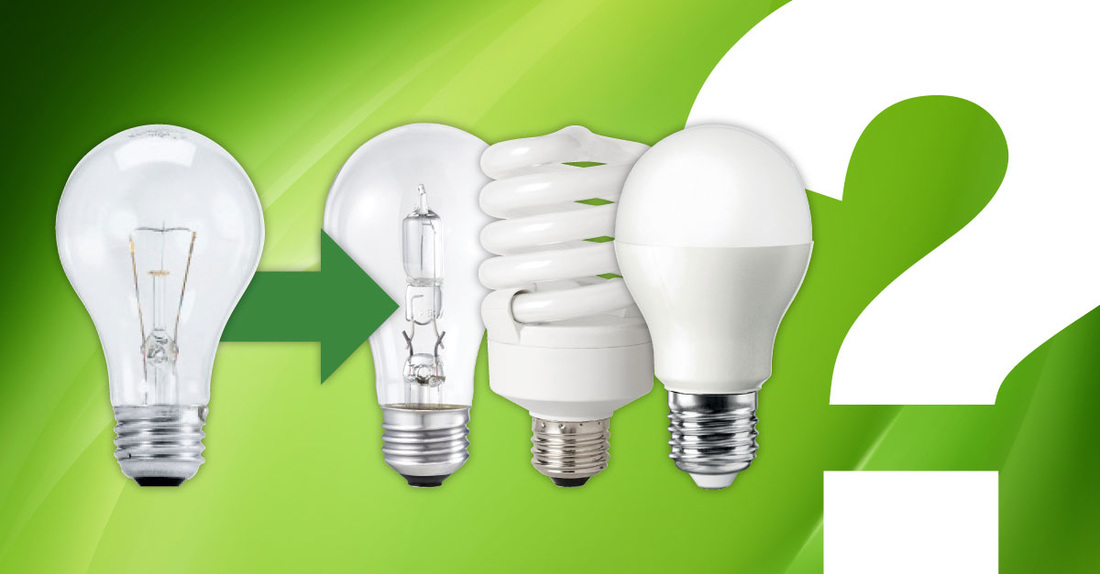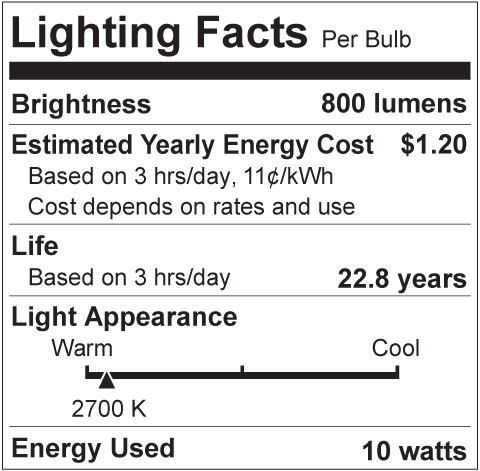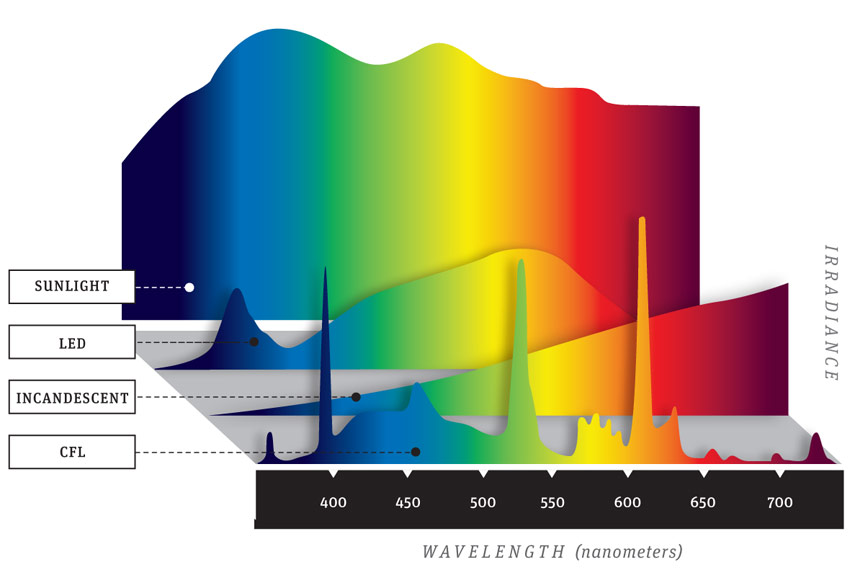A Background to the LED Light Bulb Revolution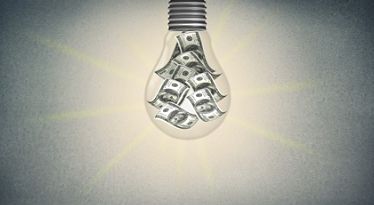 Here in the United States, 2012 through 2014 were the years of new light bulb requirements that effectively banned the most common household (and many office) light bulbs. These included 40 watt to 100 watt general use incandescent bulbs used in many lamp and ceiling fixtures. This effective ban came from 2007 legislation signed by then-president George W. Bush, which required that light bulbs produce a minimum amount of light (or "lumens") for every watt of energy used. This was done to keep us from wasting energy where we didn't need to, as energy production has an environmental impact and other ramifications. Since traditional incandescent bulbs produce relatively few lumens per watt, they didn't meet these new requirements. Most of the energy they use produces heat, and only about 5 to 10% of it produces light. This means that they're inherently inefficient and cost more money to produce light than other options do. Despite the legislation, it's still legal to purchase and use these bulbs, but they can no longer be manufactured in the United States or imported into the country. So buying them means finding whatever inventory still exists. Replacing Incandescent Light BulbsWe've talked in other posts about your options for replacing general lighting incandescent bulbs, including what to look for on lighting packages. Past articles include "Replacing Your Incandescent Light Bulbs" and "Missing Your Incandescents? Try Rough Service Bulbs." You can check out those articles for some additional information. But here's a rundown of your primary options: HALOGEN LIGHT BULBS Halogen bulbs are a kind of incandescent bulb, using halogen gases and higher pressures inside the bulb to burn more efficiently. This efficiency kept them from being banned by legislation. They glow a little whiter than traditional incandescents, but are overall quite similar while saving around 30% on energy. COMPACT FLUORESCENT LIGHTS, or CFLs Often recognized for their "swirl" or spiral design, these became an early energy-saving alternative to incandescent bulbs, operating on about 25% of the power to produce a similar amount of light as incandescents. They could also last for years. However, they didn't work well in the cold; most didn't dim; most took a while to reach full brightness; and many people didn't care for the light they produced. Plus, their lifespan was reduced when used in places where they were turned on and off frequently. LIGHT EMITTING DIODES, or LEDS The topic of this article, LEDs offer many of the benefits of incandescent bulbs, yet they're the most efficient of any general lighting option. They also offer a wider variety of color temperatures and are even available as smart bulbs that can be programmed, provide almost any color, and more. We'll explore these in depth. What Does LED Stand For?When it comes to light bulbs, LED stands for "Light Emitting Diode." The next section explains what we mean by a diode that emits light. What are LED Lights?Technically, an LED is a semiconductor device with P type materials (with Positively charged carriers called holes) and N type materials (with Negatively charged carriers called electrons) that are brought together to form a diode. When powered by electricity, the holes and electrons move toward one another; in order to combine, the electrons must release photons, which we experience as light. LED Basic FeaturesLEDs have fast become a popular lighting option because they boast many of the same qualities as incandescent bulbs while lasting far longer and using about 1/6 the energy to produce the same amount of light. Here are their most important basic features:
LED Advanced FeaturesWhile LEDs offer a lot of benefits as replacement lighting, their digital nature also lets them offer other features along with lighting. Here are a few of the ways people are enhancing light bulbs by adding to LED technology:
As you might imagine, this is just the beginning for smart bulbs. With light bulbs in every room of a house, they have the ability to keep us connected to any smart system we're using. Lumens and Color TemperatureIf you watched the video above about replacing incandescent light bulbs, you may have already picked up on the key points of choosing an LED light bulb for your home or office. Instead of looking at watts (how most of us chose general use light bulbs in the past), you need to see how much light is produced. This is measured in lumens. A 60-watt incandescent bulb, for instance, produces about 800 lumens. An LED bulb may produce the same amount for around 10 watts. You can see this in the image below. The other thing to look for is "Color Temperature," which may read as "Light Appearance," "Light Color," or something similar on a lighting label. This is measured in Kelvins, so you'll see a number followed by a K. Incandescent bulbs have a color temperature of around 2700K, which is a warm look with a hint of yellow. 2700K to 3000K are often referred to as "warm white." Higher numbers look cooler, appearing more white in the range of 3500K to 4100 (known as "cool white"), and even slightly blue in the range of 5000K to 6500K (known as "daylight.") When replacing incandescents with LEDs, you may want to stick with 2700K LED bulbs for a similar look to what you have, though some people prefer the bluer light of high Kelvin bulbs. Some will mix it up, with 2700K bulbs in many areas of the home but higher Kelvin bulbs in kitchens and utility areas. This is a matter of personal preference. LEDs and Warmer DimmingMany people seem to love how "warm" incandescent bulbs appear. As we explained above, this warmth comes from a color temperature of about 2700K, which LED bulbs have come to mimic really well. But incandescents have another trick up their sleeve: when you dim them, they become even warmer in appearance, decreasing to around 2200K. New LED technologies have now begun mimicking this feature as well, as you can see in this Philips "warm glow" LED below. While Philips uses the term "warm glow," other companies offer a similar feature under different names. LEDs and Color RenderingDifferent lighting technologies produce different balances of wavelengths on the color spectrum. This allows us to see the colors of objects more accurately or less accurately under various lights. For instance, as you can see from the image below, sunlight provides us with a strong balance of all wavelengths, letting us correctly see all visible colors. The ability for light bulbs to render colors well has traditionally been measured as "CRI" from the Color Rendering Index. On this scale, incandescent and halogen bulbs are typically considered near perfect in their rendering, scoring 95 to 100 out of 100. But as you can see in this image, their light weighs heavy on oranges and reds while not providing as much emphasis on green and blue wavelengths. Meanwhile, LEDs are typically rated around 80 CRI (though certain LEDs score in the 90s). But you can see from the chart that, while they don't emphasize oranges and reds as well as incandescent bulbs, they do emphasize some green and blue wavelengths better than incandescent bulbs. So while the Color Rendering Index makes it seem like LEDs don't render colors as well, the truth is that LEDs render colors differently, so the best technology comes down to preference and/or what you're trying to light. This is why lighting experts are now looking into a new index that will better take into account a variety of lighting factors. You can see this difference firsthand from the images in our article on this topic. Suffice it to say that LEDs do provide us light across a wide range of wavelengths and do a very good job at rendering colors, even if they do so a little differently than incandescent bulbs. LED Lights and Quality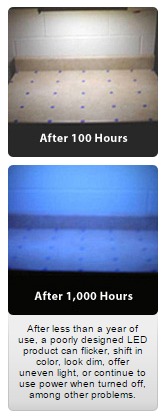 From Energy Star From Energy Star While once out of financial reach for the average consumer, LED light bulbs have become so affordable that their energy savings (compared to incandescent bulbs) often cover their initial cost within a year. Yet for those who love a bargain, it's tempting to buy bulbs that are below the pricing for trusted brands. These bargains, however, aren't always a good value, because these low prices are often achieved by using cheap components. While the diodes in an LED might keep working, the driver in a bulb might die early, ending the life of the bulb; odds of this happening are higher with low-end components. Cheaply made LEDs are also more likely to flicker or buzz. For one clue to the quality of a bulb, consumers can look to its rated life. Some are only rated for 5000 or 10,000 hours, while others may be rated for 25,000+. Another clue is the warranty. Low-end bulbs may have warranties of 3 years or less while some manufacturers warranty their LEDs for 5 years or more. This still means a cheap bulb could last for a few years, but not for anywhere as long as the other, so over time you might actually spend more on the cheap bulbs than you would on the more trusted bulbs. And you might have a worse experience with them along the way. What's more, Energy Star has found that the quality of certain bulbs diminishes quickly, as you can see from this image. Because of this, consumers can look for bulbs with an Energy Star certification when looking for an LED whose quality and brightness are expected to last. (Note that LEDs with an Energy Star rating cannot claim longevity of more than 25,000 hours, even though standard testing might normally rate them with a longer life.) What Lighting Specialists Tell UsAs LEDs transform the world of lighting, we thought we'd see what experts in several lighting niches could tell us about the impact of LEDs. Here's what we found out: Daniel Stern, editor of vehicle lighting industry technical journal DrivingVisionNews, spoke about LEDs and automobiles, explaining some of the ways LEDs are making driving safer. "LED brake lights eliminate bulb burnouts and light instantly at full intensity -- a quarter of a second faster than filament lamps -- letting following drivers react 22 feet sooner at 60 mph and preventing crashes." On the other end of the car, he points out: "Yesterday's low and high beams are being supplanted, so far mostly in Europe but probably soon in America, too, by LED-matrix Adaptive Driving Beams: full-time high beams that dynamically shadow out other road users in real time for high-beam seeing performance with low-beam glare levels. Tests in Germany show ADB gives a driver nearly 100 feet more seeing distance than low beams, without more glare." Despite the theoretical benefits, Stern cautions buyers about replacing incandescent car bulbs with LEDs without guidance or study: "There's a mountain of unsafe automotive LEDs on the market, all promoted as 'upgrades.' A few legitimate ones are now available from Philips and Sylvania, but they don't necessarily work safely in any/every application for a given bulb type. The consequences of a bad choice are much worse in the safety lights of a car than they are over the kitchen table in the house." * * * * * In our social media posts, we sometimes reference articles about the impact of light on health. We heard from Ken Ceder on this topic. Ken is Executive Director of "Science of Light," a non-profit organization focused on biologically beneficial light and bringing this into classrooms. Ken told us, "The transformative benefit of LED lighting in the field of biologically beneficial light has been the ability to engineer a more finely tuned, controlled light spectrum compared to our old fluorescent technology." He adds to this that LEDs have "transformed the size of light therapy devices from 1' x 2' light boxes to tiny hand held devices weighing mere ounces." * * * * * Finally, we spoke with professional photograph Neil van Niekerk who shared several ways LEDs are changing his work: "When shooting video clips or interviews on video, LED light panels have become my go-to light source. Obviously flash wouldn't work here -- we need continuous light. What makes LED lighting really attractive over other continuous light sources is that you can change the white balance to match the existing available light. This way you can more seamlessly blend the additional light and the ambient light." He also finds that continuous LED lighting with its adjustable white balance has other advantages over flash photography. For one thing, it keeps from startling babies during newborn portrait sessions. But in a larger sense, it provides a "what you see is what you get" advantage over flash photography. "For dramatic portraits with weddings," said Neil, "I've been using LED lights for a while now. For me, LED lights are faster to use and adjust than flash would be. Very helpful when time is limited." Replacing Lights with LEDs in the Workplace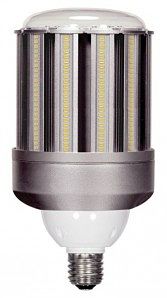 When we talk about replacing light bulbs with LED lights, we might picture household style bulbs -- the types we put in bedside lamps or in recessed ceiling cans. While these all have LED replacements, there are also LED replacements for fluorescent tubes and multi-tube panels, for large high bay lights used in warehouses, for street lights, for outdoor wallpack lighting, and more. For instance, "Corn Cob" LEDs are used to replace HID bulbs like metal halide lamps and LED T8 bulbs are able to replace fluorescent tubes. You can check out one of our articles for information on replacing fluorescent troffers with LEDs. Regardless of where you replace older lighting technologies with LED technology, though, you can enjoy the benefits of LEDs like longer lifespans, lower energy costs, and quality color rendering. There's plenty of reason to consider upgrading to LEDs at this time, and when you're ready to do so, Lighting Supply is here to help!
4 Comments
Tom Mattsen
10/7/2016 12:29:48 pm
Do you have any T8 LED lights that will work in the cold Minnesota winters? It is not uncommon for temperatures to reach -20 F and the record in my area is -53 F. I have replaced everything inside the house with LEDs but can't find anything suitable for the unheated garage. T3 bulbs for outside would also be helpful.
Reply
Steve @ Lighting Supply
10/10/2016 11:32:47 am
Thank you for the question Tom. Generally speaking, LEDs should work well in low temperatures. It's best to check the spec sheet for the LED to look for its operating temperature. If it's one that works on a ballast (as many retrofit T8 LEDs do), then you'll want to check the operating temperature for the ballast.
Reply
12/3/2019 06:45:51 am
Thanks for sharing such an useful article. After reading the article i feet it this is best article for LED lights.
Reply
Brittney @ Lighting Supply
12/4/2019 09:28:18 am
Thank you! Glad you enjoyed the article.
Reply
Your comment will be posted after it is approved.
Leave a Reply. |
This blog's content is copyright © 2014-19 Lighting Supply.

